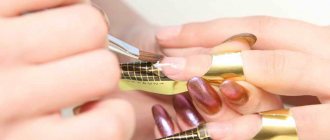When should you start packing?
You can start buying things and putting them into bags at any time, so as not to worry in case childbirth begins before the PPD. You should hurry up and put your things in the maternity hospital into bags if the doctor threatens you with premature birth.
In this case, the bag should be assembled in advance; you will not need to rush around the house in case of force majeure. Your family will bring you ready-made sets of things.
If you are admitted to the hospital for safekeeping, take with you an exchange card, medical card, passport in case of premature birth.
At approximately 32 weeks, you need to sign an exchange card at the maternity hospital or enter into an agreement. Then you can get a list of necessary things, additional recommendations regarding the upcoming birth, and begin preparing for the maternity hospital.
What documents should I prepare for the maternity hospital?
Take the exchange card, directions to the maternity hospital, passport (several copies of it), put it in your bag so as not to look for documents at the moment when contractions begin and you have no time for it. If you entered into a contract with a maternity hospital, do not forget to include it with the documents.
Think in advance who will be present at the birth, prepare documents for this person (mother, husband, sister): passport, fluorography results. Check with the maternity hospital if additional medical certificates are needed.
For your partner, prepare clean, comfortable clothes (tracksuit), washable slippers.
Features of choosing slippers for mom
Mothers will have to spend some time in the maternity hospital, both before and after giving birth. You will need two pairs of slippers. Some will serve you for taking a shower and during childbirth. It is best to sign or label them. For the ward and walking around the hospital wing, soft slippers are a convenient option. It's always nice to dip your foot into something so pleasant. The most important thing is that they are comfortable for you. Don't limit yourself to one pair. After all, after a shower, your shoes will not have time to dry well, and you will have to climb into wet slippers, which is not very pleasant. But a good mood is what you need during the prenatal and postpartum period.
Packing a first aid kit for the maternity hospital
Check with the maternity hospital in advance for a list of medications that you need to take with you. Collect two sets: for yourself and for your newborn. Your first aid kit will look something like this:
- ointment for the prevention of cracked nipples,
- thermometer for a child (it’s better to buy an electronic one),
- saline solution for rinsing the child's nose,
- cotton swabs with a limiter for cleaning ears, nose, cotton pads,
- syringes (5 ml and 10 ml) 5 pcs.,
- glycerin suppositories,
- sterile gloves - 5 pairs,
- cotton wool, bandage,
- sterile sets (cap, gown, shoe covers) - 3 pcs.,
- urinary catheter,
- saline solution - 2 bottles,
- disposable birth kit.
There is no standard set of medications for a maternity hospital. To avoid buying too much, check the list of necessary medications at the maternity hospital or with your gynecologist.
If you are about to give birth by caesarean section, you will be given a list of necessary medications for the operation and post-operative period.
How to pack a bag for the maternity hospital?
To avoid unnecessary fuss on the day of birth, check in advance the list of things to take to the maternity hospital with your gynecologist or at the maternity hospital where you plan to give birth. How many bags do you need to prepare for the maternity hospital?
Divide your items into 4 bags:
- Things for prenatal preparation and childbirth.
- Everything you need for you and your newborn for the first 3-5 days.
- Pack things for discharge from the maternity hospital into 2 bags (separately for yourself and the baby).
You will immediately take the prenatal kit with you to the maternity hospital, and a bag with postnatal items will be brought to your room after the baby is born.
There are certain requirements for a bag in the maternity hospital: this is by no means a travel bag; you may not be allowed into the department with this one. It is best to use transparent bags or large durable bags, this will make it easier to find the things you need.
What to put in your prenatal bag?
Prepare and compactly put things in your bag:
- a comfortable robe and nightie made from natural materials,
- several replacement sets of underwear,
- 3-5 pairs of socks,
- rubber shower slippers,
- comfortable slippers for the room,
- towels (separately for body and face),
- personal hygiene items,
- cosmetics cosmetic products (preferably unscented),
- separate bags for packing clothes and laundry.
Try to structure the contents of your bags as much as possible, label the packages so that you can quickly find the item you need at any moment.
How to pack a postpartum bag?
The postpartum kit will consist of things for mother and baby, so divide things into two parts so that you can get your bearings.
We are packing things for the maternity hospital for my mother:
- all things from the prenatal list,
- nightgown, robe, which will be convenient to use for feeding the baby,
- special cotton panties that fit snugly to the body and hold the pad. After giving birth, you will need to use pads for several days, so it is important to prepare a set of such panties. They are sold at the pharmacy
- disposable diapers, which are useful both for medical examinations and for staying in the ward. They will help not to stain the bed linen,
- several packs of special postpartum pads,
- 1-2 nursing bras, a set of special nipple covers. Please note that breasts will increase by 2-3 sizes after childbirth,
- It is not necessary to buy a breast pump, but you can play it safe in case you need to express breast milk,
- postpartum bandage to support the abdomen (check with your doctor about this first).
If you will have food brought from home, take care of the utensils for the maternity hospital (plate, cup, spoon, fork).
Things for the child:
- undershirts, bodysuits, anti-scratch covers, hats, socks, 3-5 sets each. Children's clothes should have external seams and be made from natural materials,
- blanket,
- several packs of wet baby wipes,
- diapers for newborns (take different sizes in case the baby is born large),
- special children's scissors with rounded ends,
- 3-5 diapers (disposable and cotton),
- baby soap, cream, powder.
All baby items needed for the maternity hospital must be pre-washed with baby powder. You can determine the size of your baby’s clothes based on the weight indicated in the results of the last ultrasound. If in doubt, take different sizes of items for your newborn to the hospital.
How to pack a bag for discharge for yourself and your baby?
For checkout, pack a separate bag so you don’t have to fuss on a holiday. Prepare your child:
- diaper,
- a vest and rompers or a one-piece jumpsuit (man),
- socks, hat,
- outerwear (overalls) or an envelope, depending on what the baby will wear when discharged.
Take care of the child car seat in the car in advance. If you take a taxi home, order a car with such a seat.
Prepare for yourself:
- comfortable clothes, taking into account the fact that the tummy may not go away immediately,
- if desired, you can use shapewear,
- comfortable shoes without high heels,
- cosmetics to put yourself in order and look beautiful.
In the beauty industry, a new service has appeared specifically for young mothers: specialists go to the maternity hospital on the day of discharge to do makeup and hair styling. This is very convenient: you will be put in order, without unnecessary hassle you will have makeup and beautifully styled hair on the holiday day of discharge.
Signs of the onset of labor
It is necessary to clearly distinguish between precursors and signs that labor has already begun. Precursors, especially in first-time mothers, begin several weeks before birth.
Table: features of precursors of labor in primiparous and multiparous women
| Precursor | First birth | Repeated births |
| Abdominal prolapse | 2–3 weeks before birth | Due to the abdominal muscles weakened by the previous pregnancy, the stomach looks somewhat drooping from the very beginning, so the movement of the uterus into the pelvic area may not be noticed. Although this happens a week, or even less, before giving birth. |
| Emotional instability | In 2–4 weeks | In 1–3 weeks |
| Weight loss | In 3–4 weeks | In 1–2 weeks |
| Nesting instinct | In 2–4 weeks | in 1–3 weeks |
| Frequent urination, diarrhea or constipation, nausea, vomiting | In 2–3 weeks | In 7–10 days |
| Removal of the mucus plug | In 2–3 weeks, but it is possible to pass after the start of contractions | In multiparous women, the plug comes off within a few hours to two weeks before giving birth. |
| Fetal movements | In 2–4 weeks | In 1–2 weeks. In some children, the inability to swim as before due to cramped conditions and a decrease in the amount of amniotic fluid provokes active movements of the limbs. The baby often and noticeably “knocks” from the inside. |
| False contractions | The body's preparation for childbirth begins about a month before it. | During the second and subsequent pregnancies, false contractions may be absent or begin 2-3 days before the real ones. |
The cervix softens closer to childbirth, causing a plug of mucus to come out and warning contractions begin. From this moment on, women feel an increase in uterine tone, the stomach seems to turn to stone at the peak of muscle tension.
You shouldn’t put off packing the birth bags for yourself and your baby until the last minute; it’s better to pack the necessary things and documents at least a month before the birth date.
The gradual opening of the uterus to allow the passage of the baby is accompanied by painful contractions of the uterus, called true contractions. In multiparous women, the period of contractions lasts approximately 2 times less than during the first birth. This process cannot be controlled like training contractions, and the interval between contractions decreases every hour.
The discharge of amniotic fluid occurs both after the onset of contractions and 1–2 hours before the start of uterine contractions. The amniotic fluid comes out gradually or in its entirety at once.
An easy way to determine whether water or normal discharge appears from the vagina, is available at home and does not require purchased tests. You need to roll up a sterile piece of gauze (bandage) in 3-4 layers and put it in your panties. After 10 minutes, take it out and examine it carefully. The water will soak through the gauze, and the mucus will remain on the surface.
You need to call an ambulance or go to the maternity hospital yourself as soon as your water breaks or contractions begin. Both of these signs are signals that labor has begun; waiting for the second one to appear is not at all necessary, and sometimes dangerous for the woman in labor and the baby.
Comparison of the contents of a maternity hospital bag at different times of the year
The contents of the maternity hospital bag will differ in summer and winter. What does a mother need in the maternity hospital in winter, and what does she need in summer? Please take into account the following nuances:
- In winter, postpartum wards are usually hot - about 25 degrees. Accordingly, the air is dry in such heat. To avoid drying out the mucous membranes of your child's respiratory tract, take a humidifier with you.
- Depending on the season, consider bringing a warm blanket or blanket to wrap your newborn after delivery.
- In the summer heat, it is convenient to dress your baby in bodysuits that can be completely unbuttoned and have short sleeves.
- In winter and cold autumn, take flannelette vests, bodysuits and rompers.
- On the day of discharge, the baby can be dressed in a beautiful jumpsuit: in the summer, made of light fabrics, in the winter, you need to wear a warm one over the light ones.
- During the cold season, take several pairs of warm socks and slippers with you in case the floor in the room is cold.
- In summer, take plenty of still water with you. It will be useful to you and your partner.
Getting ready for the maternity hospital is a troublesome, but such a pleasant experience. Even if you forget something, your family can always bring everything you need at any time.
Getting ready for the maternity hospital: 15 essential things
This long-awaited ⏰ moment has arrived: the test showed two coveted stripes and you found out that you will soon become a mother. The joy of motherhood is an incomparable feeling, and expectant mothers are ready to plunge headlong into preparing to meet the baby. As the due date approaches and the belly grows, the question increasingly arises: what should you take with you to the maternity hospital?
It’s worth approaching the issue of preparing an “alarm” bag in advance, so that you don’t forget anything in a hurry. When the expectant mother goes on maternity leave (usually the 30th week of pregnancy), she has a lot of free time before the baby is born, which is worth spending on buying and preparing the necessary things.
Here is a list of the most necessary things that you should definitely take with you:
- Documentation. When entering the maternity hospital, you will need a passport, a compulsory medical insurance policy, a birth certificate and an exchange card, as well as a referral (if you are going to the maternity hospital in advance), a contract (if you decide to give birth for a fee).
- Phone and charger.
- Pocket money: go to the buffet or ☘️ pharmacy.
- Robe and nightgown. But if you go to bed early, then it is advisable to have 2 dressing gowns and 2 nightgowns, separately for the prenatal and postnatal departments, since in the first days of communication with the baby, cleanliness and sterility in everything is important.
- Slippers. We recommend taking only washable slippers.☝️ Soft indoor slippers are not advisable (and in some maternity hospitals they are prohibited), again due to sterility considerations. And you can’t take a shower in such slippers.
- Hygiene supplies: ☕️ soap, shower gel, shampoo, disposable machine, toothbrush and paste, comb, towel. Scissors can also come in handy if you need to open something. After giving birth, you will need baby cream and liquid baby soap for your baby.
- Disposable panties and postpartum pads. Some maternity hospitals allow the use of regular swimming trunks, but it will still be more hygienic and convenient to use disposable panties. The issue of sterility is especially acute if surgical intervention was required during childbirth and stitches were applied. Postpartum panties usually look like shorts and are made of mesh elastic material, thereby providing comfort and allowing the body to breathe. It is enough to take 2-3 panties with you for the first days of the rehabilitation period, and then you can use regular swimming trunks.
- You will need a notepad and pen to write down doctors' recommendations, observe and take notes on the first days of the baby's life, indicate the names of medications and dosage.
- Dishes. Not required in all maternity hospitals, but desirable in many. You should take a cup, plate, spoon, and fork with you.
- Water without gas. ⛈️ After giving birth, you will be thirsty, so it’s better to stock up on water in advance. As a rule, you are allowed to take water in a small bottle with you to the delivery room.
- Light food for snacking. Many women in labor experience a feeling of hunger after childbirth, and there is still too much time before lunch or breakfast as scheduled. Therefore, so that mommy does not go hungry, you should take with you something light and non-perishable to eat. These could be, for example, green apples or biscuits. But eating is allowed only if there are no contraindications. ✨ If you had a caesarean section, then there can be no talk of any snack.
- Disposable diapers. A very necessary thing. They will also come in handy for examinations and if the baby needs to be placed under a UV lamp. A standard package usually contains 10 diapers, which will be quite enough.
- Diapers for baby. Most maternity hospitals still use official hospital diapers, so the need for diapers arises only upon discharge from the hospital. But the question of swaddling with or without a diaper is purely individual; each mother decides for herself what to choose.
- A cap, scratches and socks for your baby will come in handy if your baby is under a UV lamp or if you decide not to swaddle your baby from the first day. In this case, it’s worth taking a couple more vests and rompers with you.
- A separate point is worth highlighting additional accessories that may be needed as needed: a breast pump will come in handy if problems arise with establishing the lactation process ♂;
- Compression stockings ♀ (or compression bandages replacing them) are required during a caesarean section operation, as well as according to doctors’ indications. They serve as a good prevention of varicose veins, thrombosis, and thromboembolism.
- The bandage is worn according to doctors' instructions.
You should know that not all maternity hospitals allow you to bring things in bags. Some emergency departments require you to bring everything you need only in bags and you cannot take with you Example of women's travel bags.
The above list is not final and is of a advisory nature. It can be shortened or expanded. ✂️ For example, sometimes you need to purchase special bandages or catheters. The list of necessary things will depend on where you live and in which maternity hospital you are going to give birth. Most often, maternity hospitals have their own lists of permitted and necessary things. It won't be difficult to get them.
☝️ And, perhaps, the most important thing that a future mother should take with her to the maternity hospital is self-confidence and a positive mood. After all, if the mother is happy, then the baby is happy.










